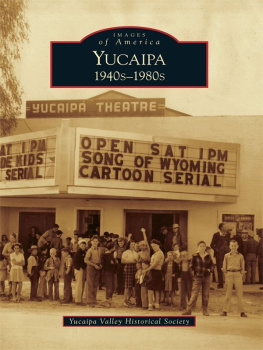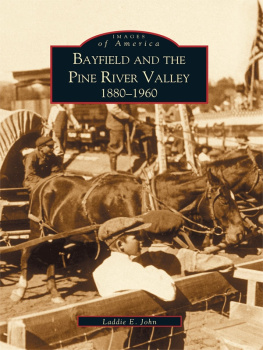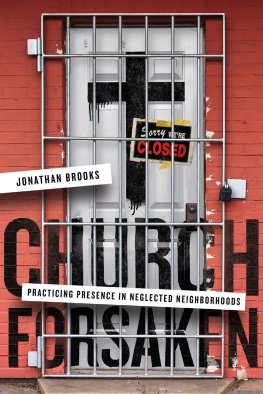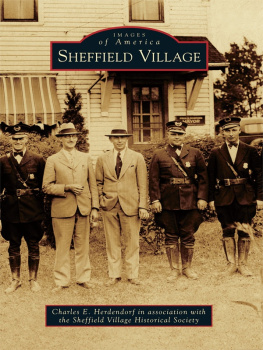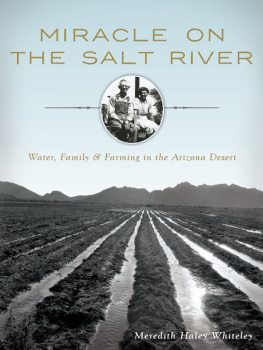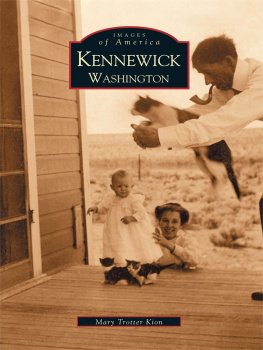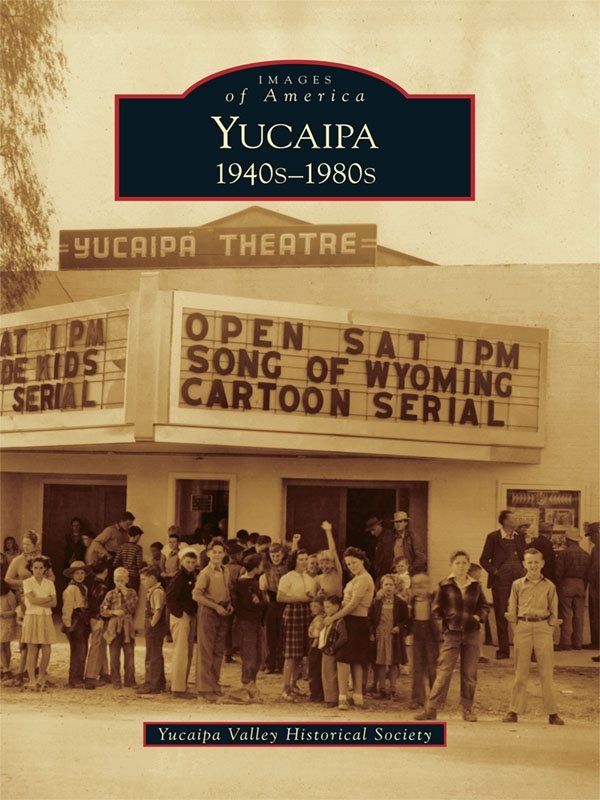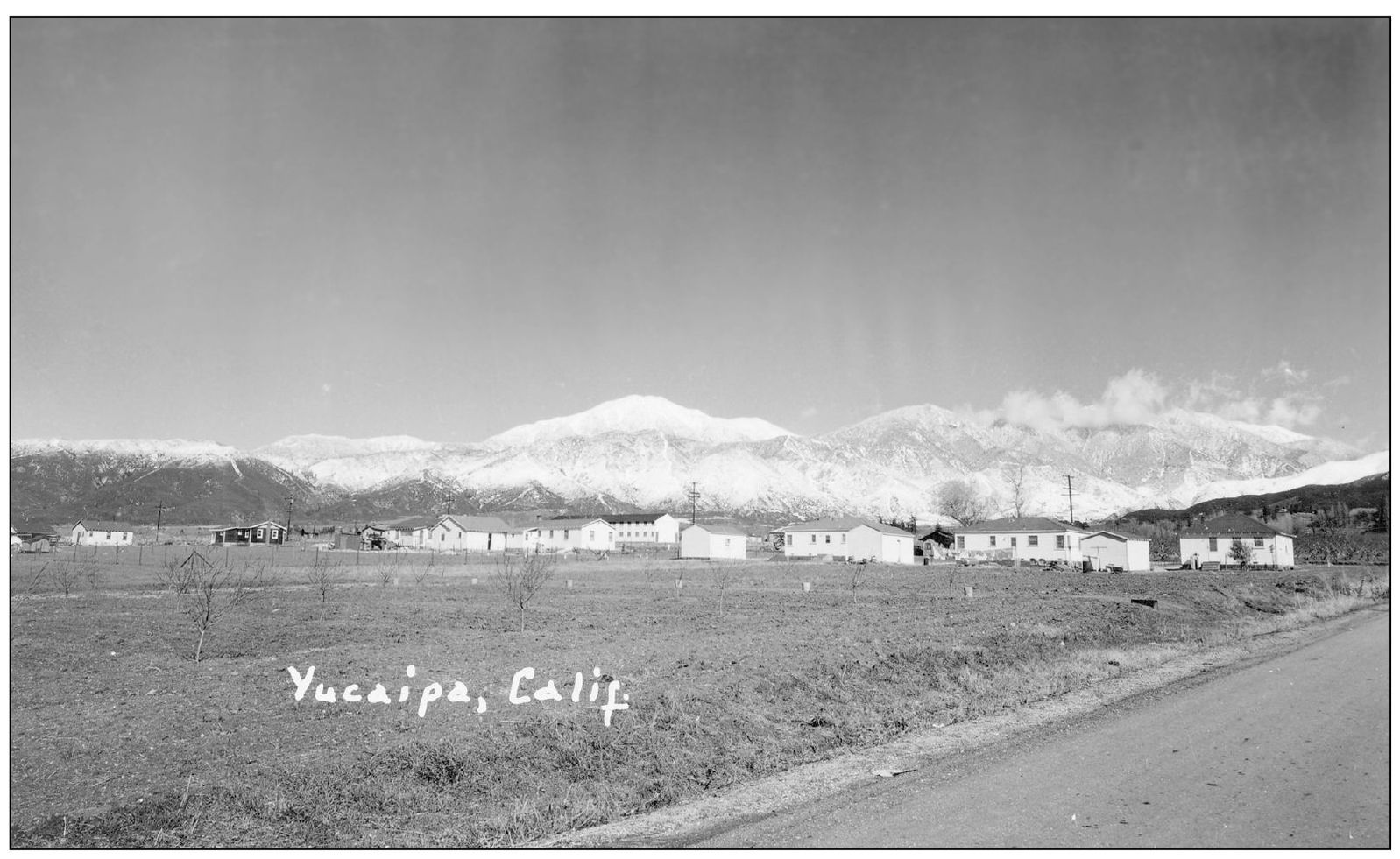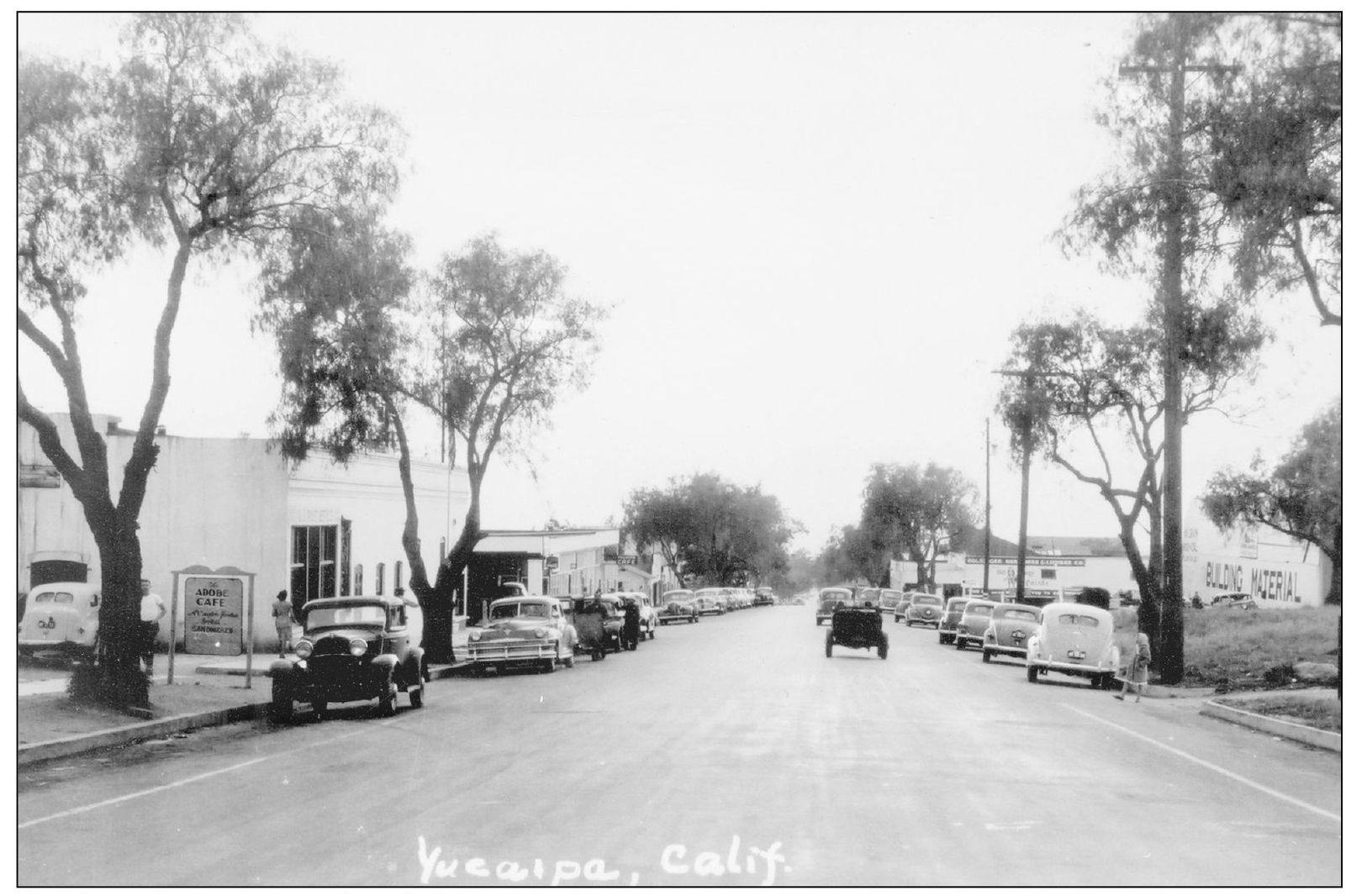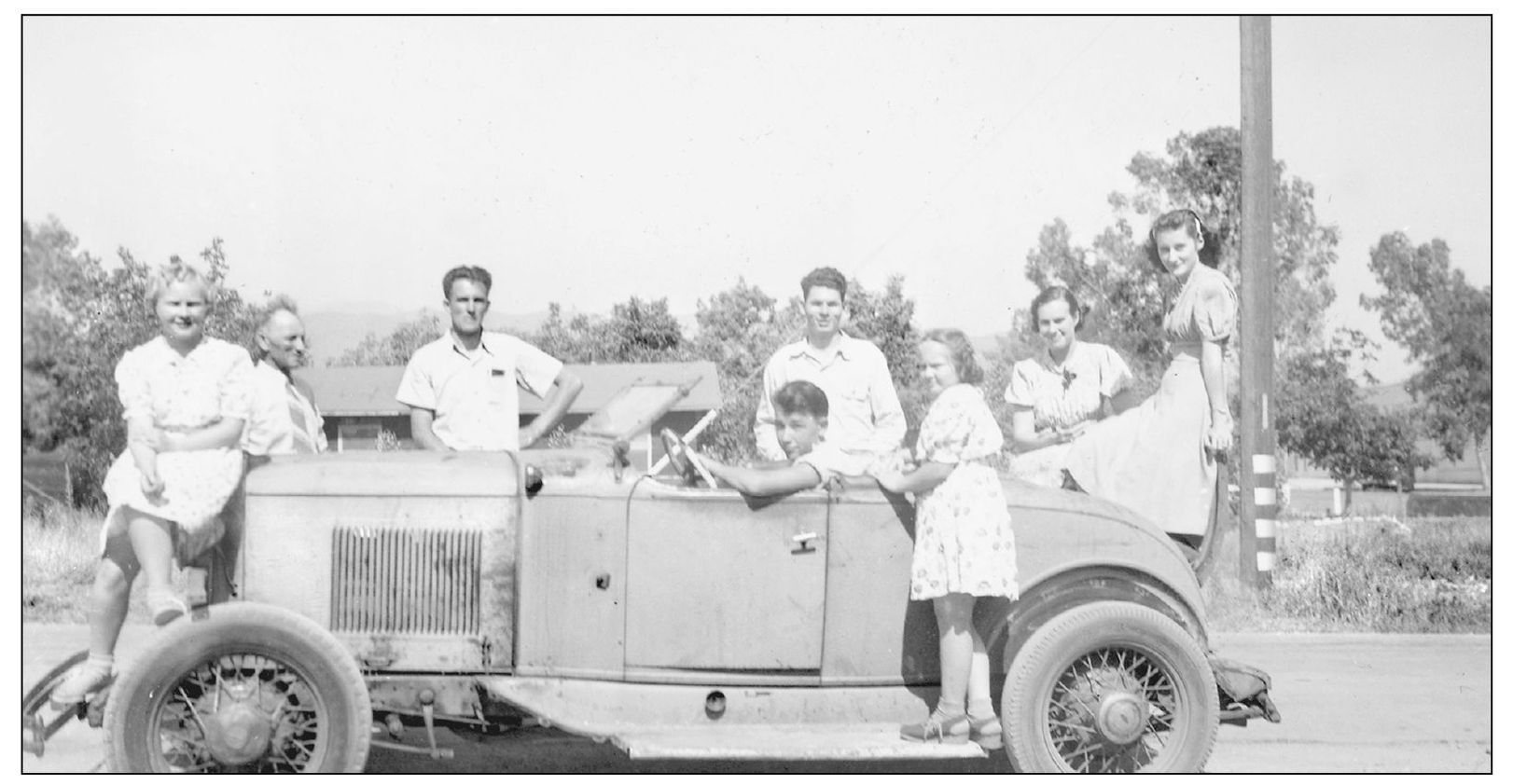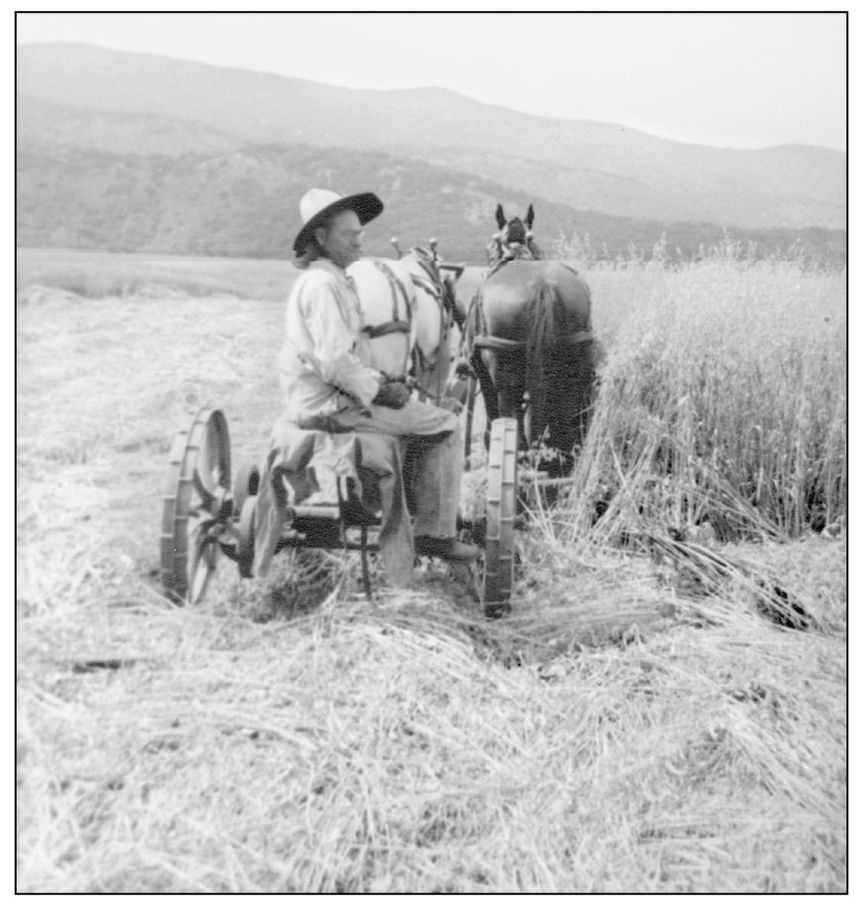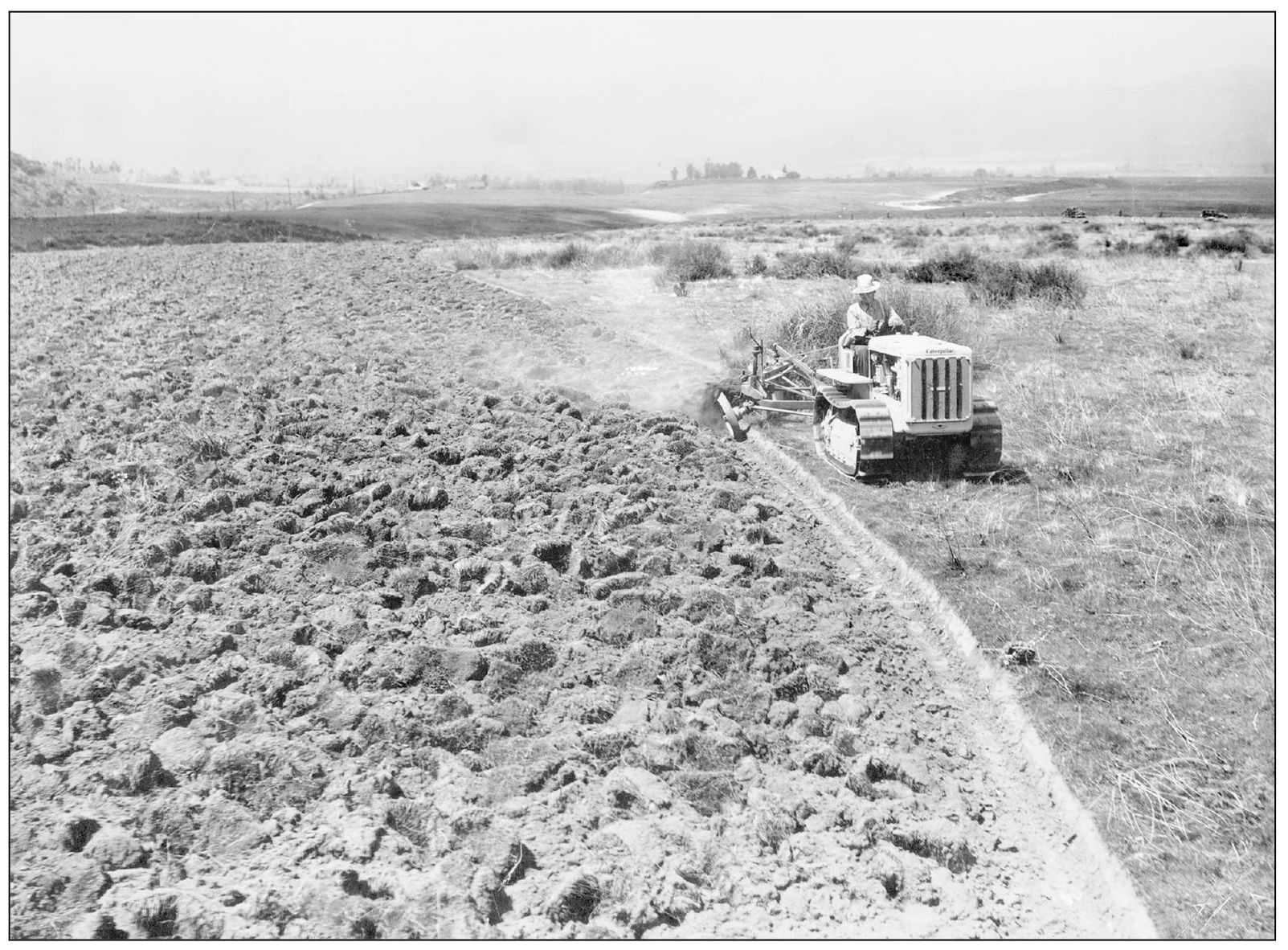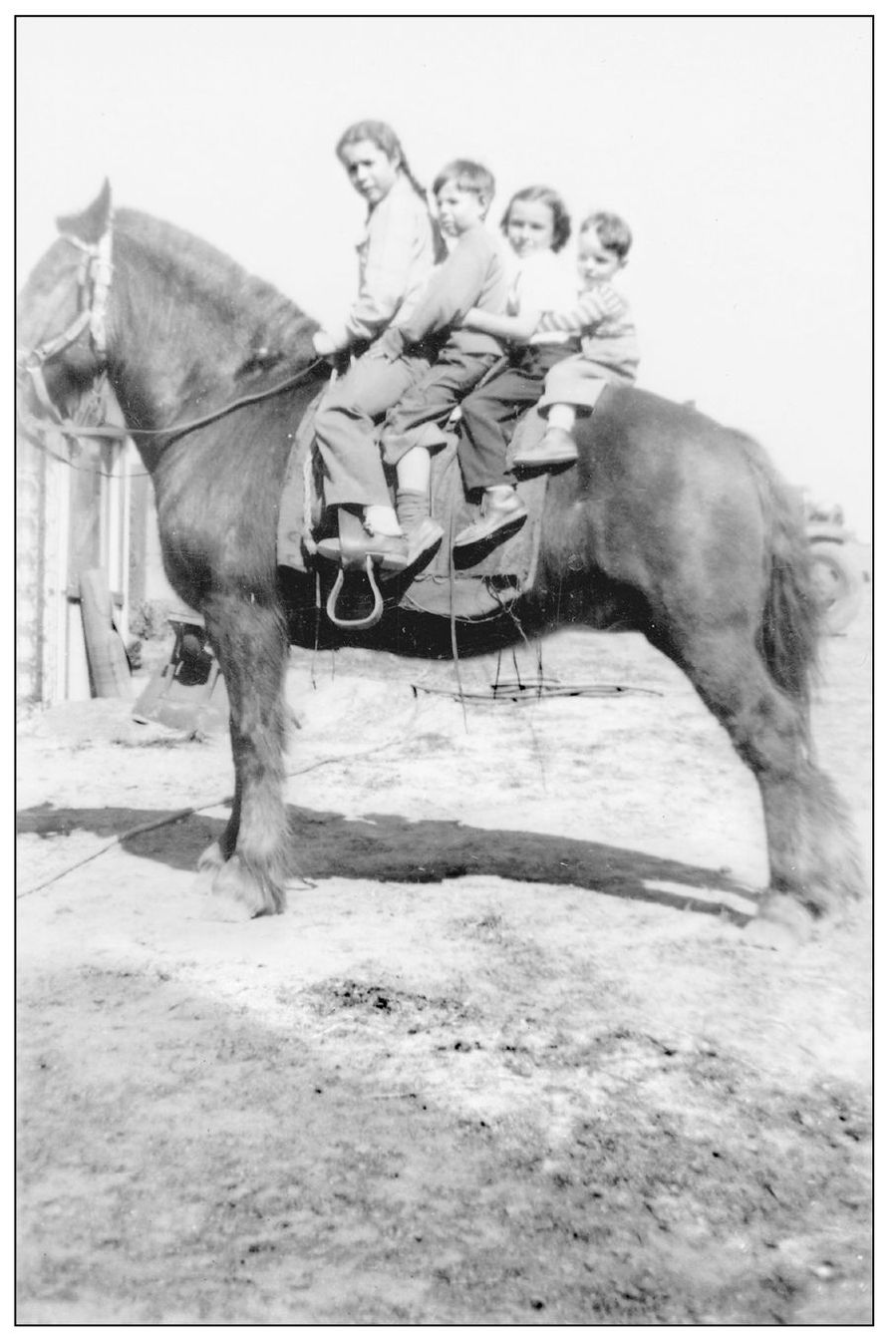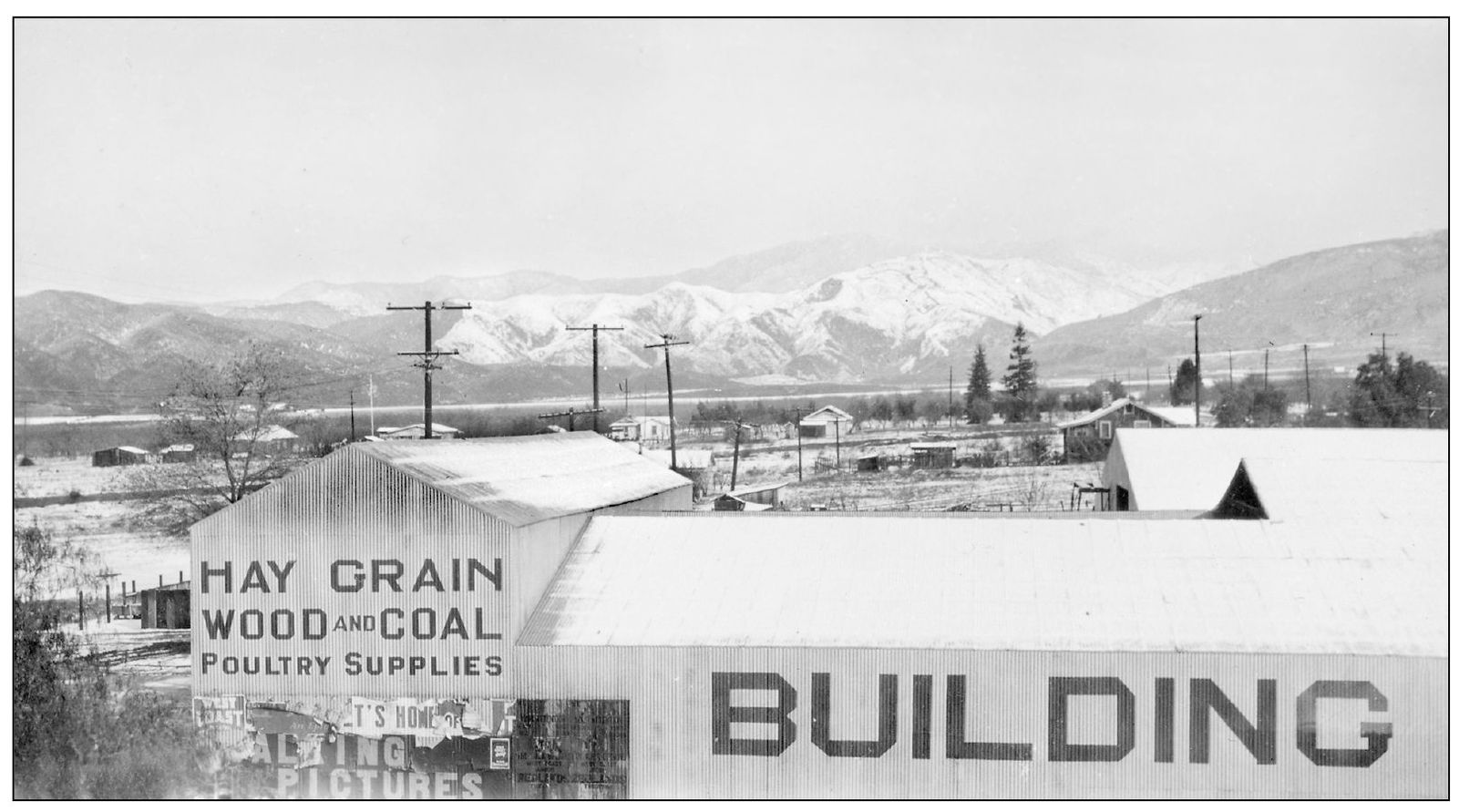ACKNOWLEDGMENTS
As the volunteers at the Yucaipa Valley Historical Society put together the first Arcadia book, Yucaipa, a strong desire to continue sharing our history in a pictorial form developed. When the call from San Francisco came saying we should do a second edition, there was much jubilation among the tribe.
Claire Marie Teeters and Harry Birkbeck developed a plan as Char Lenz, Marlene Humphreys, Kandie Cansler, and Ann Whitlock started sorting photographs. Humphreys put them in chronological order and Teeters began the layout, placing photographs into numbered positions.
Jack Curtright designated and built the computer system. Teeters fired up her unit and started writing the book. Of course, she saved it on her desktop, which had Curtright rolling his eyes, but, being good-natured, he set up a back-up system and began the scanning. Hank Cobb assisted.
Bob Rippy and others went to work sorting photographs, too. Marj Ford and Helen Ruggles spread the word on needed items.
At the same time, Wilma Hanson, Steve Maurer, Beverley Coffin, Ellen Benefiel, Mhila Curtright, Tom Ziech, Beverly Patrick, and Jan Lemon began the research by reading all editions of the Yucaipa News Mirror looking for significant events.
Birkbeck began delving into the societys files, checking data with the help of archivist Barbara Dowell. Calls went out for specific photographs and many people, including Jackie Deaton, Carolyn Traylor, Cansler and Hank Wochholz shared their personal images.
All photographs used in this book come from the Yucaipa Valley Historical Society unless otherwise noted.
Two and a half months later, Teeters shut the door on the workroom and started the serious writing. Scanner jockeys Curtright and Ken Dowell took their places. Proofreaders David Miller, Rippy, Lenz, Ford, Ziech, Benefiel, and Birkbeck started their work, and before long, the book was developing. Yucaipas history merged with the photographs. About then everyone remembered photographs that would be ideal, and pictures moved around or were replaced. Captions were rewritten. Great discussions were held on what to keep in and what to leave out of the book. Arcadia editor Debbie Seracini and Teeters happily e-mailed back and forth through the process.
There was frenetic activity as the team worked, but as the last week of effort started, there was happy chatter of what kind of celebration to hold.
And we did celebrate. Oh, yes, there was joy in Yucaipaville.
Find more books like this at
www.imagesofamerica.com
Search for your hometown history, your old
stomping grounds, and even your favorite sports team.
One
THE 1940S SURVIVING AND THRIVING
This 1947 view shows upper Yucaipa with snow-covered foothills and new homes. The two-story structure no longer exists.
By the 1940s, the pepper trees along Yucaipa Boulevard were well established, and the uptown area along California Street was a busy business district. The Corner Market and the post office stand on the left, across the street from Holsingers Lumber and Hardware. (Photograph courtesy of Toni Muirhead.)
This A. J. Threlfall photograph of Yucaipa Boulevard, taken west of Bryant Street, shows the pepper and eucalyptus trees in full glory.
Cy Barnett sits behind the wheel of his 16th birthday gift, which cost $15. From left to right are sister Helen Barnett, father Garrold Olda G. O. Barnett, brother Howard Barnett, Ken Cathcart, sister Barbara Barnett, sister-in-law Marie White Barnett and Margie Cathcart. This c. 1940 photograph was taken at the corner of Second Street and Yucaipa Boulevard.
While automobiles were certainly the most popular mode of transportation in the 1940s, horses could still be seen downtown. In this photograph, judge G. O. Barnett has his granddaughter, Kandie Barnett, on his steed. Notice Capts Rabbitry and Feed Supply store at 113 Second Street in the background. Rabbitries and egg ranches were becoming major businesses in the community.
Vet Overly harvests oats on the Casa Blanca Ranch where he was foreman. The Overly family lived on the ranch for many years. They moved to the nearby 1886 Pass Schoolhouse building after the school closed in 1985.
Vet Overly is plowing the Casa Blanca fields around 1944. In the early 1940s, large plots of land were turning over to new owners. Leon Atwood, who owned the Casa Blanca ranch, bought Bill Clydes ranch and expanded his holdings to over 1,100 acres, becoming the largest individual operator in the district. Most of his land was put to grain. Atwood had also purchased the Henry Webster ranch, adjacent to his property. Local pioneer L. Cobb, for whom Cobb Canyon Road (todays Live Oak Canyon Road) was named, sold his properties, including the orchard, to Mr. and Mrs. Dehails from Beverly Hills.
From left to right, Beverly and Roger Ward and their cousins Sue and Larry ride Chubby, half of Fred E. Wards workhorse team, which included a skittish Clydesdale named Ball. The familys small ranch was at the southwest corner of Sixteenth Street and Highway 99 in Dunlap Acres, which is the lower, west end of the community.
Holsingers on upper Yucaipa Boulevard advertises its wares on its buildings in this photograph that also shows housing units, utility poles, the agricultural areas of the North and Middle Benches, and the beautiful snow-capped hills. An old West Coast Redlands Theater (later known as the Fox Theater) playbill can be seen in the window.

